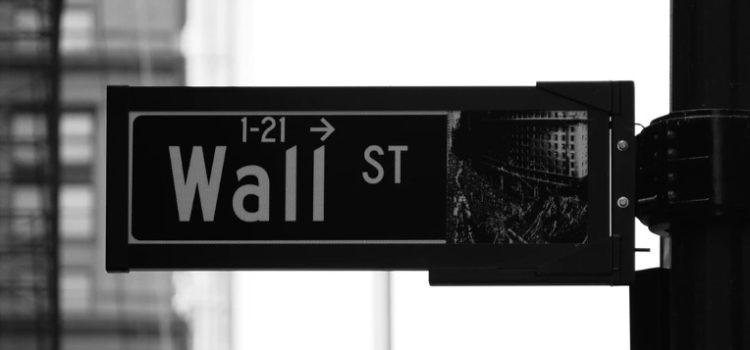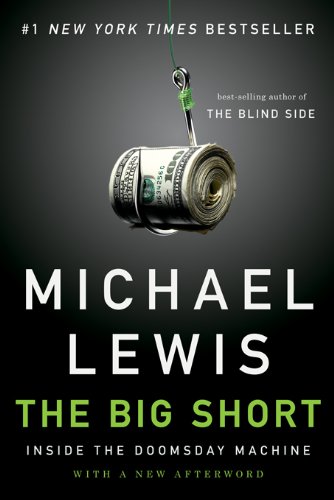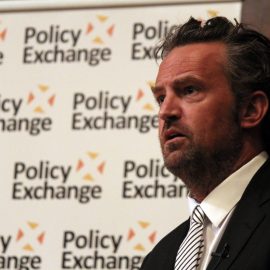

This article is an excerpt from the Shortform summary of "The Big Short" by Michael Lewis. Shortform has the world's best summaries of books you should be reading.
Like this article? Sign up for a free trial here .
Who are Charlie Ledley and Jamie Mai? And how did they turn $110,000 into $80 million?
Charlie Ledley and Jamie Mai are the founders of Cornwall Capital, a New York City investment corporation. They shorted the housing market before the 2008 financial crisis and were featured in the book and movie The Big Short.
We’ll cover how Charlie Ledley and Jamie Mai got their start in investing and how they went from second-class citizens in the financial world to major Wall Street players.
Origin Stories: Charlie Ledley and Jamie Mai
By fall 2006, Gregg Lippman’s proposal to short the housing market through credit default swaps had made the rounds in the financial world. But he still had few takers. Too many investors, it seemed, were leery about the idea of taking a short position against an asset that major players like Goldman Sachs, Deutsche Bank, and Merrill Lynch seemed so sure about.
Two young, obscure start-up investors, however, heeded the call and saw the opportunity of a lifetime staring them in the face. Charlie Ledley and Jamie Mai had established their (admittedly short) financial careers by betting big on events that Wall Street seemed certain wouldn‘t happen. Profiting off the impending collapse of the subprime market fit perfectly into their theory of how the financial world worked.
Charlie Ledley and Jamie Mai: Garage Band Hedge Fund
Charlie Ledley and Jamie Mai weren’t career Wall Street guys. They barely had careers at all. Starting their fledgling money management fund, Cornwall Capital Management, with just $110,000 in a Schwab account, they were the sort of bit players that couldn’t even get a phone call returned at Goldman or Merrill. Charlie Ledley and Jamie Mai were scrappers, a “garage band hedge fund.” In fact, they literally started out of a backyard shed in Berkeley, California.
But they had a theory about financial markets that proved to be all too prescient—and that would give them a powerful advantage as the subprime market spun itself into a more and more complex web. Their insight was that investors only understood their own particular slice of the market, whether it was Japanese government bonds or European mid-cap healthcare debt. Everyone was looking at the small picture, the micro. Cornwall’s strategy was to go macro and look at the big picture. With information so unevenly distributed, there had to be pricing mistakes—assets that were priced for far more or far less than they were actually worth, simply because investors didn’t understand what they were actually buying and selling. And that inefficient pricing mechanism could mean big money for the investors who did understand and bought at the right time.
Charlie Ledley and Jamie Mai’s first test of this theory was with Capital One, a credit card company specializing in issuing credit cards to Americans with poor credit scores. In the early 2000s, their stock had tanked amid fears that they had insufficient capital reserved as collateral to cover the risky credit cards they’d issued. The company soon got into a regulatory dispute with the federal government. The market smelled fraud and investors fled in droves. Despite this, Capital One wasn’t posting unusual losses. Upon speaking with a mid-level corporate manager at Capital One (the only person who would return their phone call), Charlie Ledley and Jamie Mai discovered that he was buying stock in his own company—not the behavior they’d expect to see from officers at a company engaged in fraud. They determined that Capital One was more or less a sound company, the regulatory dispute was trivial, and that the market was irrationally penalizing them.
For Charlie Ledley and Jamie Mai, the stock was clearly underpriced at $30-per-share. The best way to profit off this was not to buy the stock itself, but to buy the right to buy the stock at a fixed price for a defined period of time. And the options to buy Capital One stock at $40 for the next 2.5 years cost just over $3 each. It was another asymmetrical bet. If the company really was fraudulent, the stock would be worth nothing and your losses would be capped at $3-per-share of options that you’d bought. But if the company resolved its regulatory issues, the stock would likely jump to $60—double its current price and over 33% more than what you would pay per share once you exercised your options. It was a no-brainer. Cornwall bought $26,000 in Capital One options. When the stock rose, that position was worth $526,000. It was a strategy based upon exploiting the false confidence of other players in the market. They even came up with a name for it: “event-driven investing.”
Charlie Ledley and Jamie Mai: Getting in the Door
This strategy paid off handsomely for Charlie Ledley and Jamie Mai. The market for stock options was wildly inefficient. If some external event would cause a stock to be worth either $100 or $0 within a year, it was irrational for an option to buy the stock at $50 to be priced as low as $3. But the market was littered with opportunities like this. Wall Street’s model followed a bell-shaped probability curve for stock prices: it mistakenly believed that a $30-per-share stock was more likely to increase to $35 per share than to $45 per share. It assumed orderliness where there was, in fact, chaos. This was totally at odds with reality. Wall Street seriously underrated tail risk: the ability of extreme events to change asset prices in either direction.
By early 2006, Cornwall had $30 million in the bank. But Charlie Ledley and Jamie Mai were still small potatoes by Wall Street standards. They might have been high-net worth individuals, but they weren’t institutional investors—they weren’t managing other people’s money, just their own. On Wall Street, they were still second-class citizens. This wasn’t just about recognition or social prestige. Their lowly status denied them the right to trade in the highly complex options—like credit default swaps—being sold through the quantitative trading desks at the big investment banks. There was major money to be made, but Cornwall was locked out of the opportunity. But when they hired Ben Hockett, doors began to open.
Hockett was a former Deutsche Bank trader who’d left Wall Street behind to trade derivatives from the comfort of his home in Berkeley Hills. Hockett was a respected figure at the major banks. And he knew the right people to get Cornwall’s foot in the door. With a few well-placed phone calls and some meetings, Hockett got Cornwall its ISDA (International Swaps and Derivatives Association) Master Agreement, giving them the right to buy credit default swaps from the likes of Greg Lippmann. Charlie Ledley and Jamie Mai now had a seat at the adult’s table.
Shorting with a Twist
When Charlie Ledley, Jamie Mai, and Hockett heard Lippmann’s pitch, they recognized credit default swaps as just another type of option, the kind they’d been trading in for years. The market had fantastically underpriced the probability of an extreme event—in this case, the subprime world going up in flames. By October 2006, the doomsday scenario already seemed to be happening. Home prices were falling and borrowers were defaulting. The bonds were already turning sour.
But Charlie Ledley and Jamie Mai took a slightly different shorting position than did Eisman, Burry, Lippmann, and others. Instead of betting against the lowest tranches of the CDOs, they purchased credit default swaps that enabled them to bet against the highest tranches. Why would they do this? Because they saw that the triple-A bonds were just as vulnerable to collapse as the triple-B bonds, but the swaps against them weren’t priced that way.
Obviously, these bad loans were all subject to the same economic forces. If one subprime mortgage went bad, they were all likely to go bad. Charlie Ledley and Jamie Mai couldn’t believe the opportunity they were confronted with. On October 16, 2006, they bought $7.5 million worth of credit default swaps from Lippmann’s trading desk, betting against the double-A tranche (one rating below triple-A) of a CDO. Four days later, they bought another $50 million worth from Bear Stearns. Cornwall only needed to spend a fraction of the face value of the referenced CDOs. A small investment in credit default swaps translated to a potential enormous gain once the CDOs collapsed. By February 2007, they owned $205 million worth of credit default swaps against double-A CDO tranches. They had put their chips down.
Their Bet Pays Off
When Morgan Stanley finally admitted defeat and exited the trade, they had lost a net $9 billion, the single largest trading loss in Wall Street history. By the end of 2007, the bank lost over $37 billion through the subprime mortgage bond and related derivatives market. In an infamous conference call with shareholders, Morgan Stanley CEO John Mack revealed that he had zero understanding of what his bond department had been up to. The game had grown too complex for even the titans of Wall Street themselves to understand. Total losses on U.S. subprime-related assets would eventually top $1 trillion.
For Charlie Ledley and Jamie Mai at Cornwall Capital, now was the time to act. Their credit default swaps on the collapsing CDOs were worth more than they had ever been. But if they waited too long, they might lose everything. Either the government would step in and guarantee the bad subprime loans, or the banks they’d bet against (like Bear Stearns) would go bankrupt and be unable to pay them. It was time to sell. On August 6, 2007, at a pub in the south of England (where he was on vacation with his family), Ben Hockett logged onto his laptop and looked for buyers on $205 million in swaps on double-A tranches of subprime mortgage CDOs. UBS, Merrill Lynch, and soon-to-be-bankrupt Lehman Brothers fiercely competed with one another to buy what Hockett had to sell. In the end, Cornwall’s swaps costing about $1 million sold for $80 million by the close of business that day. Their long shot had paid off 80:1.
———End of Preview———

Like what you just read? Read the rest of the world's best summary of "The Big Short" at Shortform . Learn the book's critical concepts in 20 minutes or less .
Here's what you'll find in our full The Big Short summary :
- How the world's biggest banks contributed to the 2008 financial crisis, greedily and stupidly
- How a group of contrarian traders foresaw the bubble popping, and made millions from their bets
- What we learned from the 2008 crisis - if anything






